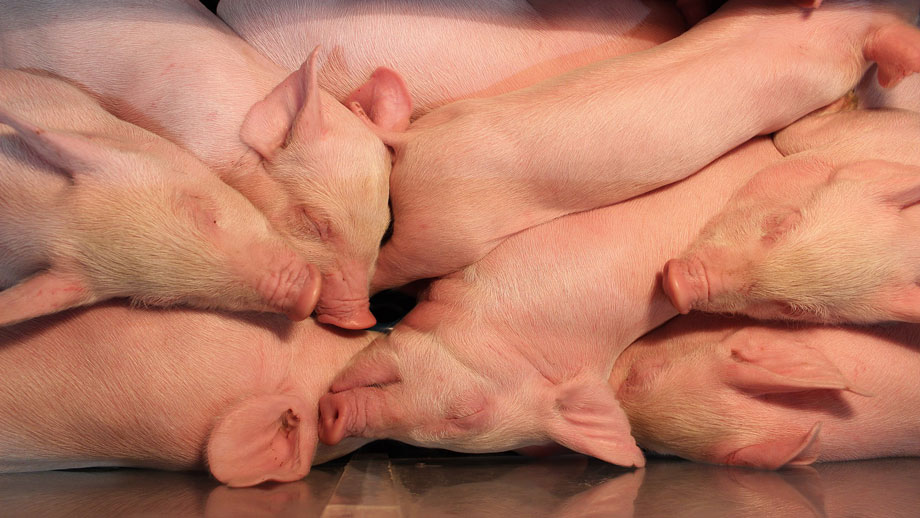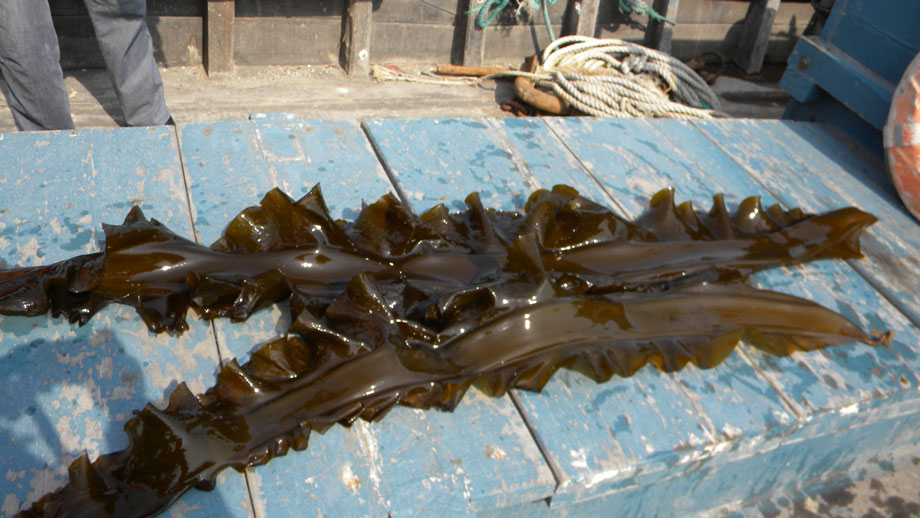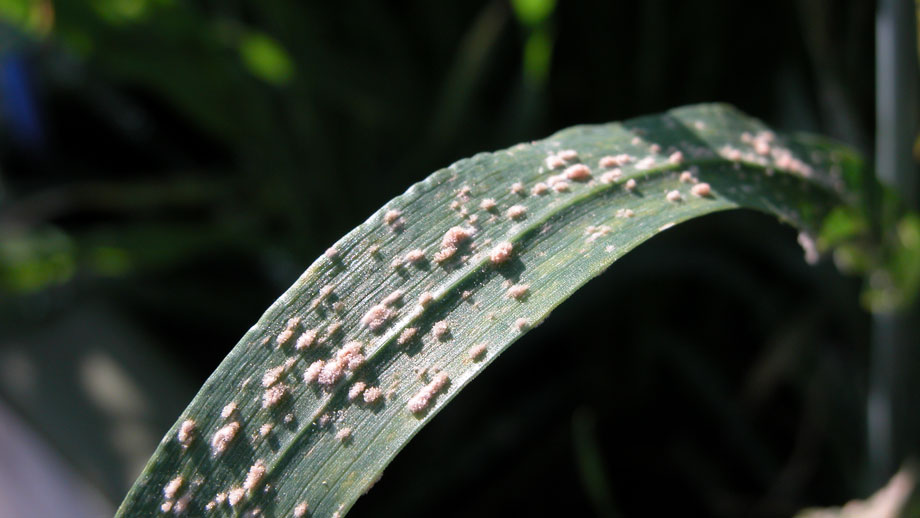Navigation auf uzh.ch
Navigation auf uzh.ch

Zurich is this year’s guest canton at the OLMA, the Swiss trade fair for agriculture and food, in St. Gallen (running from 13 to 23 October). In the fair’s special “research garden” exhibition, UZH is presenting two projects on the subject of food innovation. The University Research Priority Program (URPP) “Evolution in Action: From Genomes to Ecosystems” exposes the arms race underway on farm fields between grain varieties and their pests, which constantly find ways to infest even resistant types of grain. The Institute of Animal Nutrition and Dietetics, in turn, is showcasing is promising research on macroalgae that make pig feeding more efficient and which could even supplement human nutrition.
“We want to show the public at the OLMA how research can contribute to making feed production more environmentally sustainable,” says project head Daniel Brugger from the Institute of Animal Nutrition and Dietetics at UZH. He and his team blended macroalgae of the species Laminaria japonica (also called kombu or sugar kelp) into feed for piglets, with pleasing results: piglets that are fed algae require 2% to 5% less energy to gain the same amount of weight as animals fattened on conventional feed mixtures.
The researchers discovered the explanation for that in the pigs’ intestines because that’s where the algae’s dietary fibers exert their beneficial impact by acting as food for “gut-friendly” germs such as lactobacilli, thus fortifying them and helping them to suppress disease-causing bacteria.
Algae are nutritional and already get eaten regularly in Asia today. Moreover, algae are umami, which means that they have a pleasant savory flavor that enhances dishes.

The findings of the study on algae are promising: piglets that were fed algae had fewer diarrheal pathogens such as clostridia in their intestines and required less energy to gain weight. As Brugger explains it: “If there are fewer disease-causing bacteria in the gut, the intestinal immune system doesn’t have to expend as much energy to keep them in check.” The animal can invest this freed-up energy in its growth.
A resulting side effect of supplemental feeding with algae is that it takes less feed in total to fatten pork livestock. By Brugger’s calculations, three football fields of grain acreage per 1.5 million piglets can be saved through supplemental feeding with algae. Moreover, algae are aquatic biomass, so no arable land acreage is required for their production. Adding algae to livestock feed could thus pay off economically as well as ecologically. Furthermore, algae contain the essential trace elements iodine and selenium, which therefore no longer have to be added to livestock feed.
Can these findings be extrapolated to humans? Definitely, Brugger says: “Algae are nutritional and already get eaten regularly in Asia today. It certainly isn’t wrong to integrate algae into one’s diet. Moreover, algae are umami, which means that they have a pleasant savory flavor that enhances dishes.” However, one also needs to be careful because the rich iodine and selenium content can become a problem if a person overconsumes algae. The same is true for pigs.

The project by the URPP Evolution in Action uses the grain variety triticale, a cross between wheat and rye, to demonstrate how pests such as mildew repeatedly succeed in overcoming plant resistance, a problem that even triticale faces. This grain variety, which was invented in the late 19th century, had long been considered resistant to pests. But in 2001, mildew-infested triticale plants were discovered for the first time in Switzerland. Then the first mildew epidemic in triticale fields in Switzerland erupted in 2005. Since then, the fungus has quickly adapted itself to other triticale strains.
The aim with the example of triticale is to demonstrate to the public how important it is to breed new resistant grain varieties, says Mira Portmann, the program manager of the URPP Evolution in Action, “and to point out how important basic research is to that endeavor.”
Genomes are the key to developing new grain varieties. “We know many effective resistance genes,” says Thomas Wicker, a professor of plant molecular biology at UZH, “but we don’t understand yet precisely how some of them function. That’s what we’re trying to find out now.” To do that, Wicker is working together with Beat Keller, a professor of plant biology at UZH, from whose group the exhibit at the OLMA originated.
Wicker is confident that resistance genes exist that are harder for mildew and other pests to overcome. But as important as it is to develop new resistant varieties, it is equally vital to deploy them in a targeted way by, for instance, sowing varieties with different resistances in different years or by planting a mix of different strains in the same field, Wicker explains. That makes it harder for pests to adapt to them.
Were it permissible to employ genetic engineering techniques such as CRISPR/Cas gene editing scissors, it would mark a major advancement in researching and developing new grain varieties. New breeds could then be developed in a time frame of one to two years, whereas it takes eight to ten years to develop new varieties through conventional hybridization. However, use of genetic engineering is prohibited in Switzerland and Europe for the time being, though it is allowed in the USA, for example.